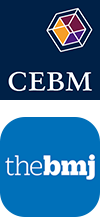




Annette Plüddemann
When teaching evidence-based medicine to undergraduate students, postgraduate students or professionals I encourage all my students to think critically and ask for the evidence for whatever clinical questions they might have. However, I am continually thinking about different approaches to my teaching, to ensure that my sessions influence knowledge, behaviour and attitudes to EBM. With this in mind, I thought it might be useful to reflect on what the evidence says about teaching EBM, particularly in terms of what approach is likely to be the most effective. These were some of the questions I had as well as some of the evidence that pointed me to some answers:
What are the effects of teaching EBM to healthcare professionals?
An overview of 16 systematic reviews evaluating interventions for teaching evidence-based health care to health professionals found that “multifaceted, clinically integrated interventions, with assessment, led to improvements in knowledge, skills and attitudes”. The 81 separate studies, included within the 16 systematic reviews, reported a diversity of methods using varied interventions directed at both students and practicing healthcare professionals. However as the outcome measures varied considerably between the included studies, it was not possible to provide an overall effect estimate. The overview also highlighted the issue that none of the included reviews found studies that reported on practice outcomes, process of care or patient outcomes. However these long-term outcomes present several challenges, particularly since there are several factors that influence translating evidence into action.
What might be the most effective method of teaching EBM?
A mixed methods study with 497 participants using an RCT and focus groups compared the effectiveness of a blended learning (lectures and tutorials combined with online activities and “bedside teaching” on the wards) versus didactic learning approach of teaching EBM to medical students. The study found that while there was no difference in the students’ EBM competency between those that had received the blended learning compared to didactic learning approach, amongst those who had received blended learning the perceived self-efficacy and application of EBM in the clinical environment were significantly higher. However the study reported a low completion rate (less than 30% of students completed the outcome assessment), which may have underpowered the RCT and may mean the results are not generalizable, as it is likely that students with more of an interest in EBM would have completed the assessment.
What other methods can I use to share knowledge about EBM?
Social media has become an important way in which we can exchange and share knowledge and ideas. A multi-country mixed-methods study of 317 clinicians assessed the use of Twitter and Facebook to deliver evidence-based practice points, including key findings with links to journal articles or podcasts by clinical experts. The study found that social media may be relatively effective for improving EBM knowledge and the use of research evidence in clinical practice. However these findings would need to be validated in an RCT. The study also highlighted the key limitation regarding the effectiveness of social media for disseminating knowledge, which is that it relies on the user’s ability to discern the relevance and quality of the information.
These are just a few examples of the research looking at how we might teach EBM, and it appears we certainly need more research in this area. However, so far the take-home message for me is that using a variety of approaches and also constantly reviewing and reflecting on what I do coupled with trying new ways to engage and communicate with students is the way to go.